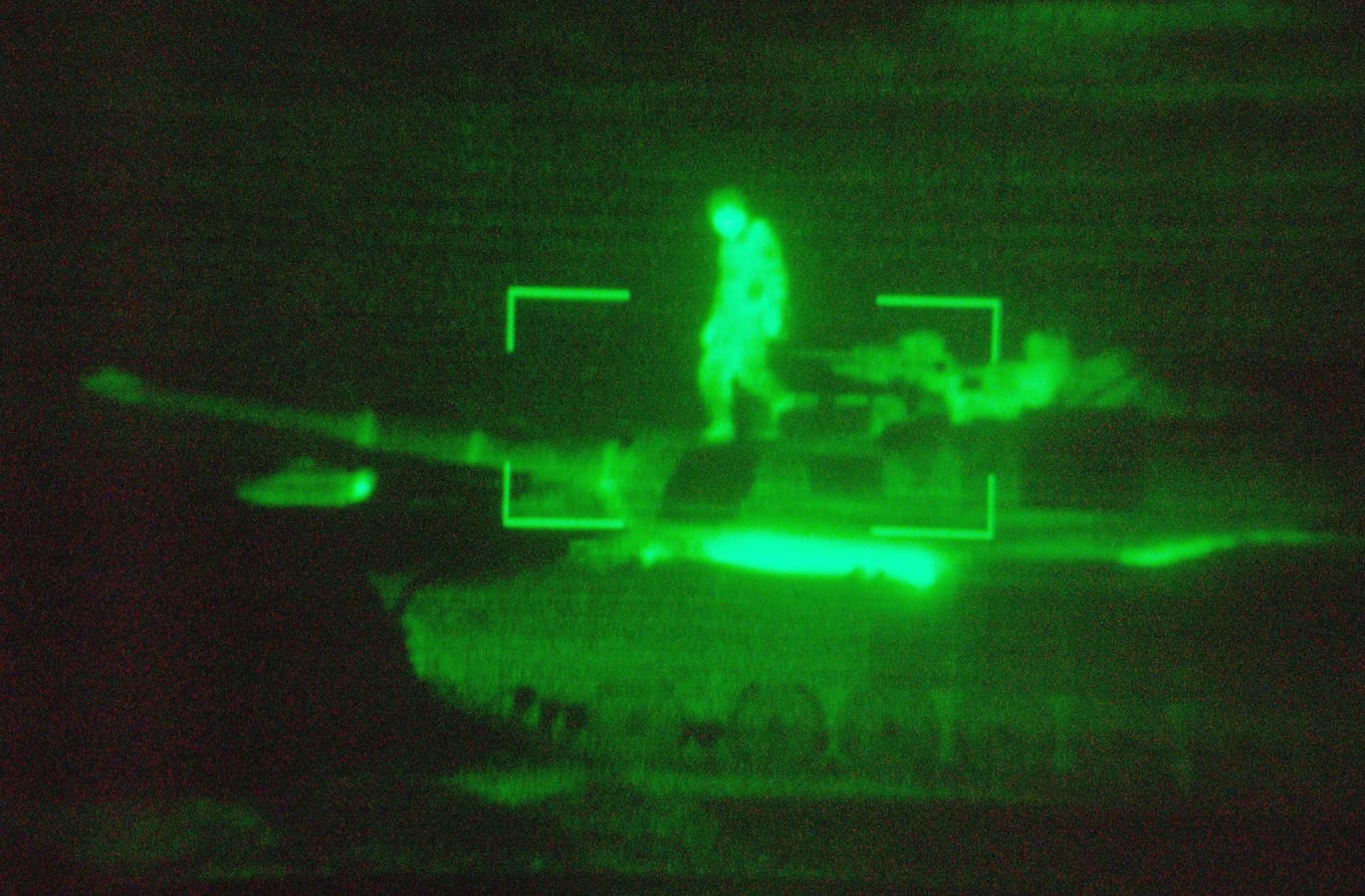FPV kamikaze drones, small racing quadcopters fitted with explosive warheads, first just over a year ago as an improvised weapon used by Ukrainian troops. At first FPVs were used in ones and twos, now thousands are produced every month by both sides. A Russian group is attempting to raise the bar with a new FPV fitted with a thermal imager for night attack.
Along with drones, thermal imagers have been a game changer in this conflict. The technology sees heat, allowing soldiers to spot and identify targets even in complete darkness or through smoke and dust. Imagers have always been in short supply, and, as with drones, armies on both sides have relied on volunteer groups and fundraising drives to supply frontline units. In general Ukraine has had the edge, partly thanks to U.S.-supplied thermal imagers. Putting one on a drone looks like a no-brainer.
“It’s a natural evolution of this FPV technology,” says Samuel Bendett, an expert on Russian uncrewed systems and adviser to the CNA and CNAS thinktanks told Forbes, noting that Russian state media like TASS is starting to give airtime to volunteer efforts assembling FPV drones.
However, fitting a thermal imager to a drone is not so simple. These days high-end drones, like smartphones, have high quality video: and it is possible to shoot impressive 4K video at 60 frames per second from a drone that fits in your pocket. 2.7k and 1080p video are routine on lower-cost models. But thermal imagers are many years behind video cameras, and resolutions are much lower.
You can get a low-cost thermal imager like the Seek Thermal Compact for under $200, but the resolution is only 206 x 156 pixels – fine for checking insulation and finding leaks around the house, but no good for seeing objects hundreds of meters away. Going up to 320 x 240 will double the price, but you will still struggle to tell whether you are looking at a truck or a tank. Part of the problem is that while a video camera can show differences in brightness and color, a thermal image is monochrome and only shows temperature. The details which help identify objects visually may be missing, an issue highlighted by how difficult it is to recognize faces via thermal imaging.
When discussing the issue of thermal imager on reconnaissance drones, an expert from Ukraine’s Aerorozvidka drone unit noted on social media that a Matrice drone with a thermal imager costing several thousand dollars could only detect Russian vehicles at 3-4 miles distance and even then distinguishing types was difficult. The daylight camera could pick out targets from 15 miles. They suggested spending the money on more batteries and an additional ground control unit as a better way of boosting the drone’s usefulness.
This applies even more so with FPV drones. The drone flies at high speed and requires a skilled pilot to avoid obstacles and successfully hit the target, so good quality video with a rapid refresh rate, and cheap thermal imagers will not do the job.
Volunteer group Escadrone is a major producer of FPV drones for Ukrainian forces, assembling more than 1,500 a month from commercial components. Escadrone’s basic Pegasus FPV drones costs just $341, while a bigger, more powerful version comes in at $462 and they are highly lethal: a compilation video of ‘greatest hits’ gives an idea of what they can do. But thermal imaging is not a major priority.
“Ukrainian manufacturers also have all these technologies and can produce FPV drones with thermal imaging cameras, but the main problem is the price,” an Escadrone spokesman told Forbes. “If a regular FPV drone costs $500, then the same drone with a thermal imaging camera will cost about $2,500.”
Escadrone sent a video of a test of one of their drones with a thermal imager, but the spokesman noted that they would only be producing this type if the users were willing (and able) to pay for them. While night attack might be a useful capability, most operators might prefer to have five daylight FPVs than one that was night capable.
This type of issue highlights the difference between military-grade loitering munitions like the U.S.-made SwitchBlade 300. This is similar in size to an FPV drone and has daylight and thermal imaging, plus a lock-on-to-target function and numerous other features, but costs around $50,000 per shot.
Larger, reusable drones costing in the tens of thousands of dollars make far more sense for thermal imagers. Ukraine makes extensive use of heavy bomber drones with thermal imaging — because they are so noisy and easy to spot in daytime, night attacks are far more effective.
Will the Russians can mass-produce thermal imaging FPV drones? The new night-fighter is being developed by a group in St Petersburg which makes the Gortensiya (Hydrangea) drone and claims to make 3,000 per month. This is a short-range unit with a range of 4 miles and a flight duration of 10 minutes with a two kilo/4.4 pound warhead or five minutes with a three kilo/6.6 pound warhead.
As we have previously noted, while Russian media praise FPV building efforts, they have been obstructed rather than helped by Russia’s bureaucratic military procurement process. Funding for large numbers of thermal imagers, either relatively cheap imported models or relatively expensive Russian-made ones is likely to be a challenge without a direct contract to supply the army. But it is still a good way for the group to advertise their technological prowess even if only a handful are made.
Thermal imaging FPVs are likely to be a rarity on both sides in the immediate future. But as thermal imager technology progresses down the same route as digital cameras and the dollars-per-megapixel drops, expect to see a lot more in future.
Read the full article here





